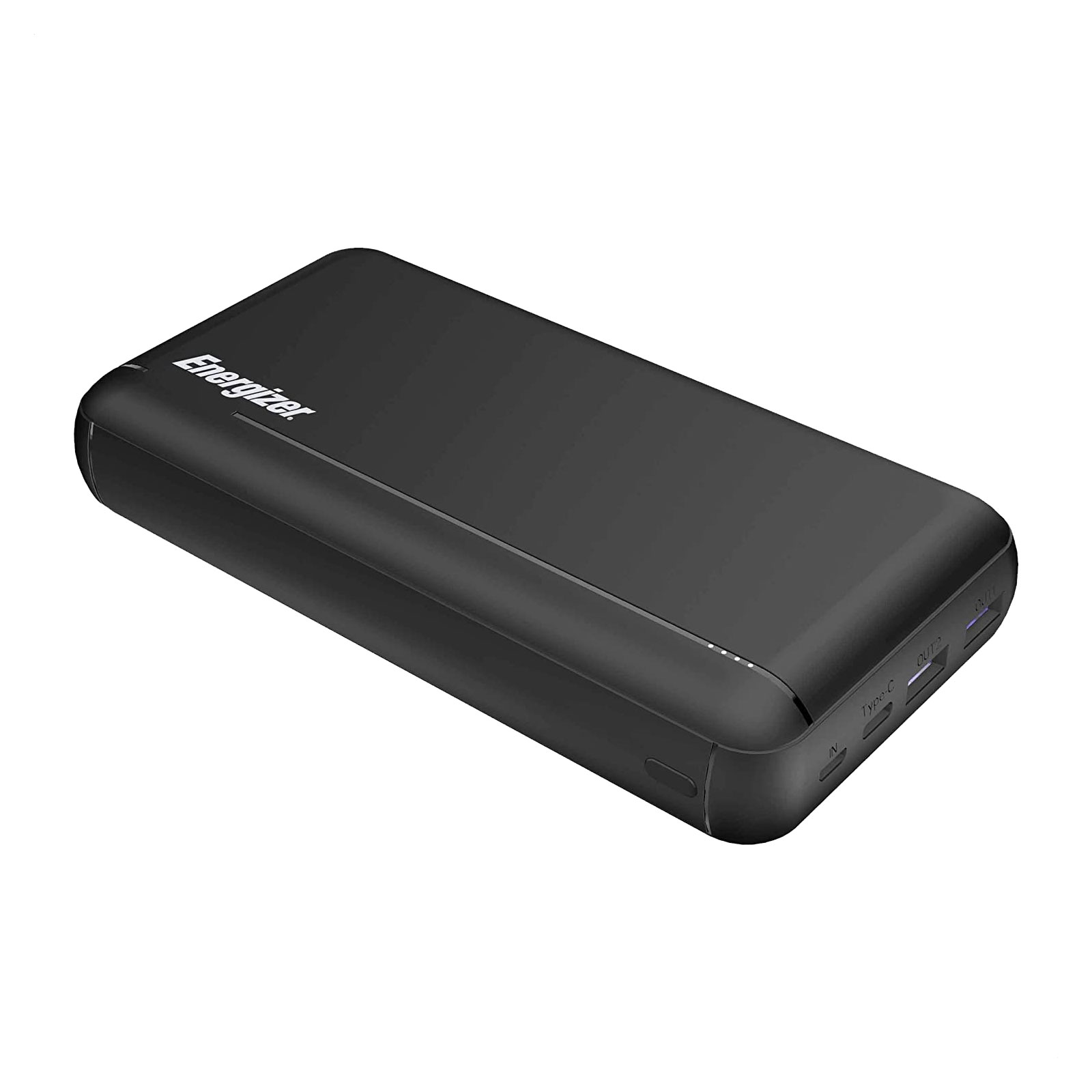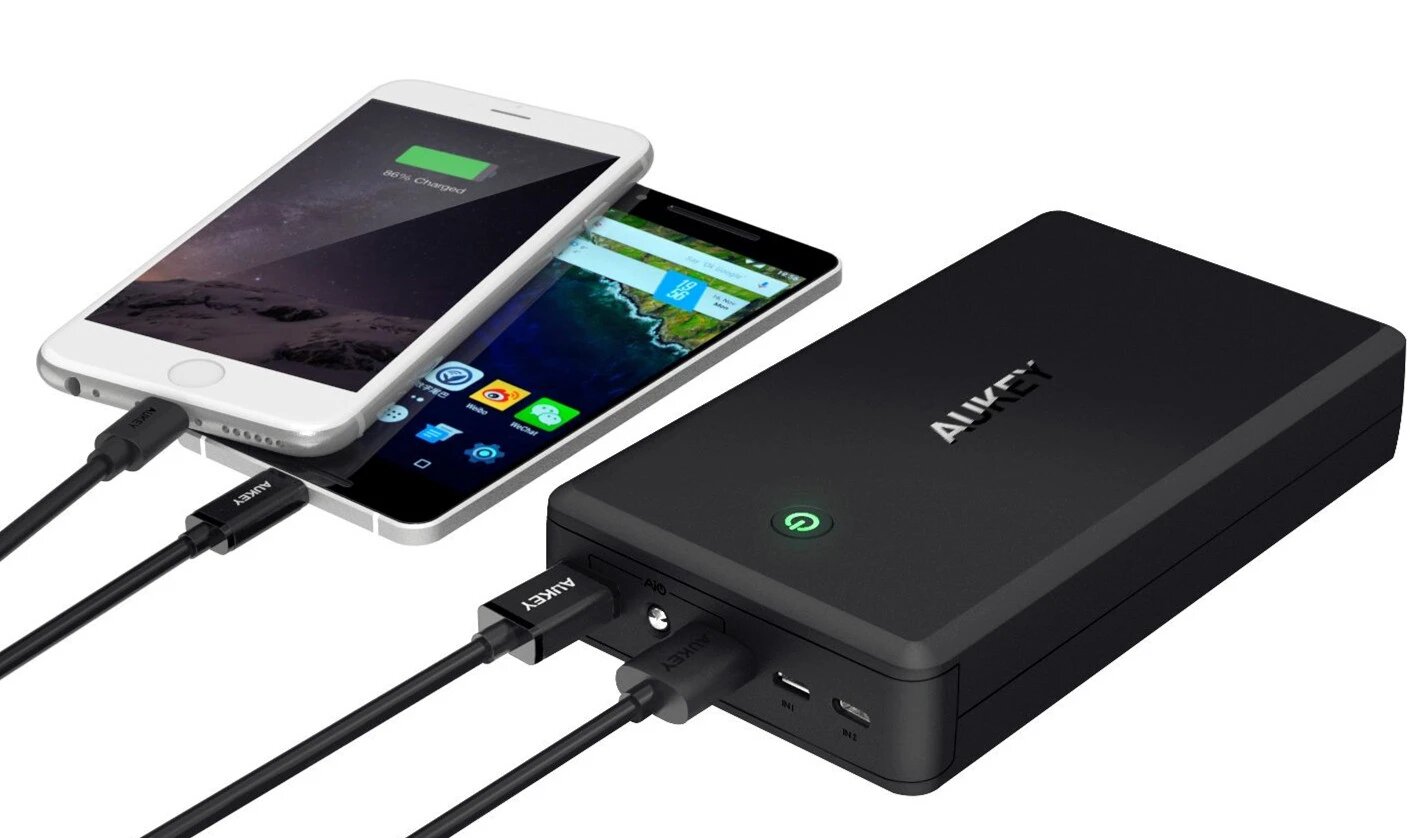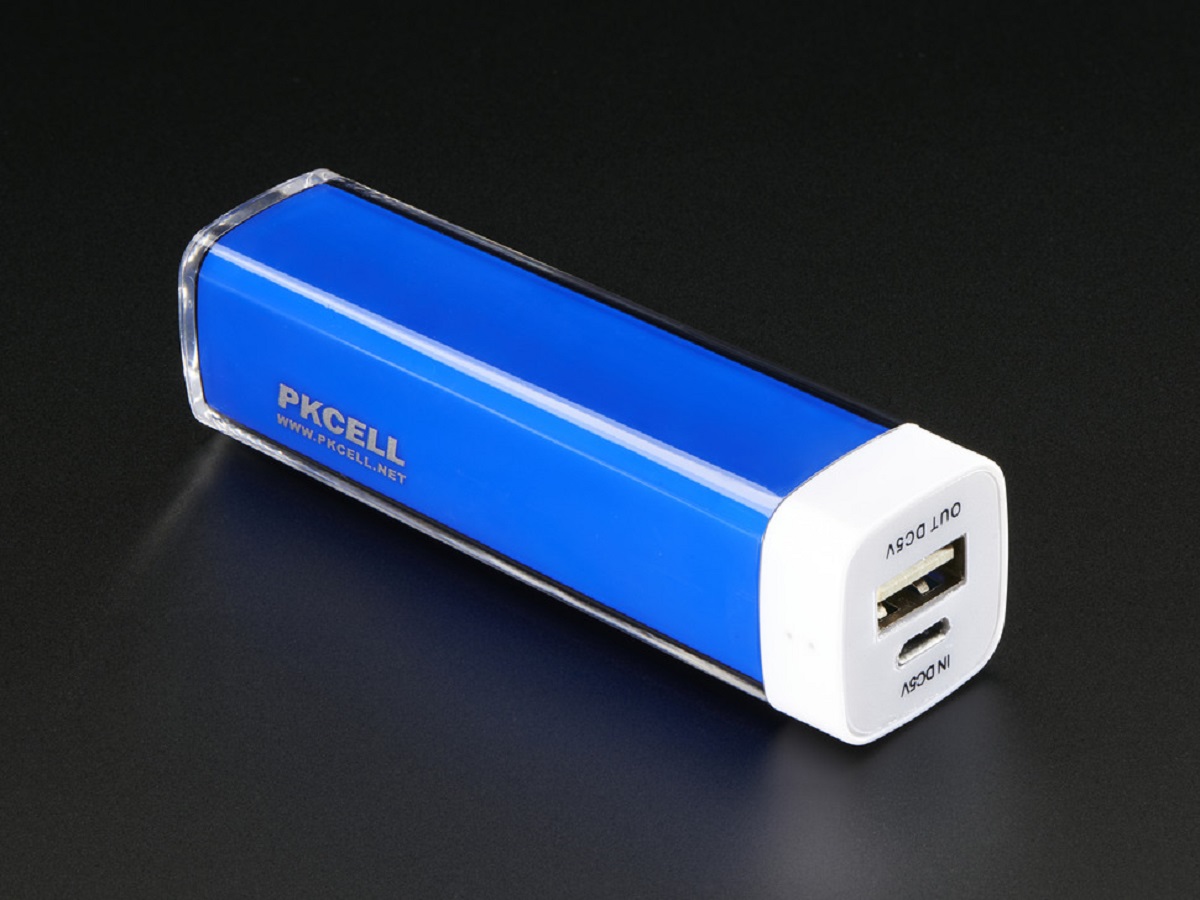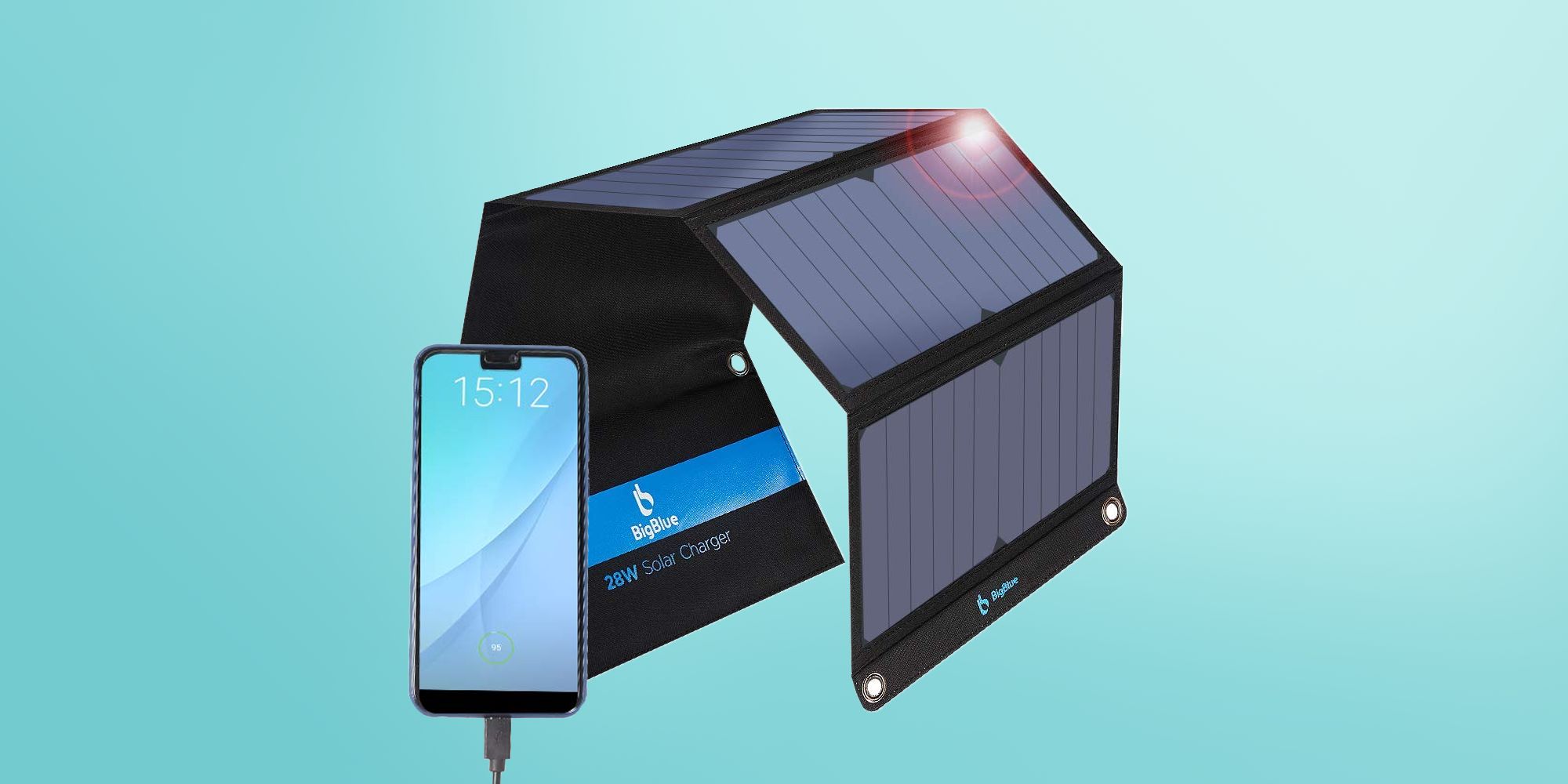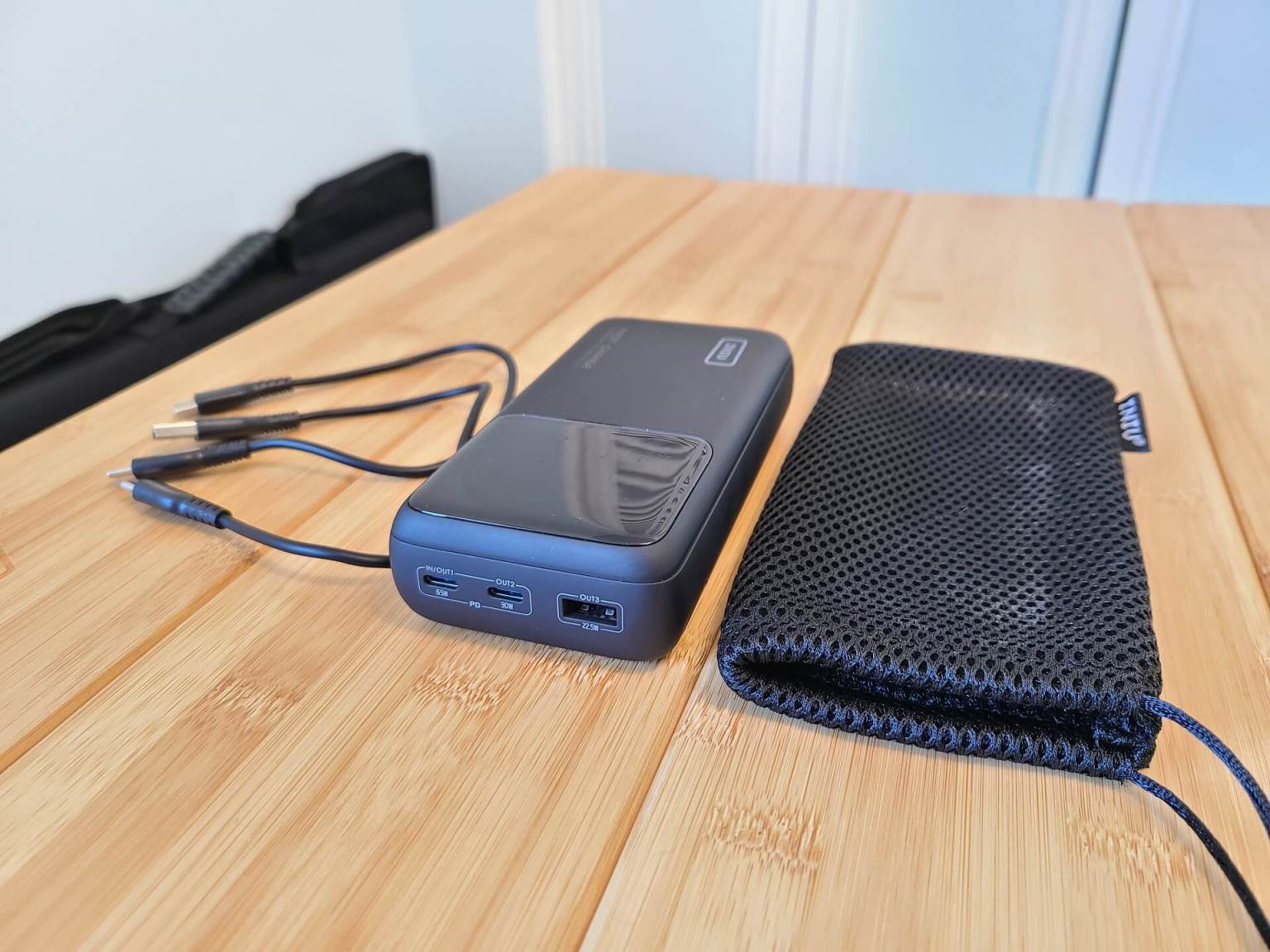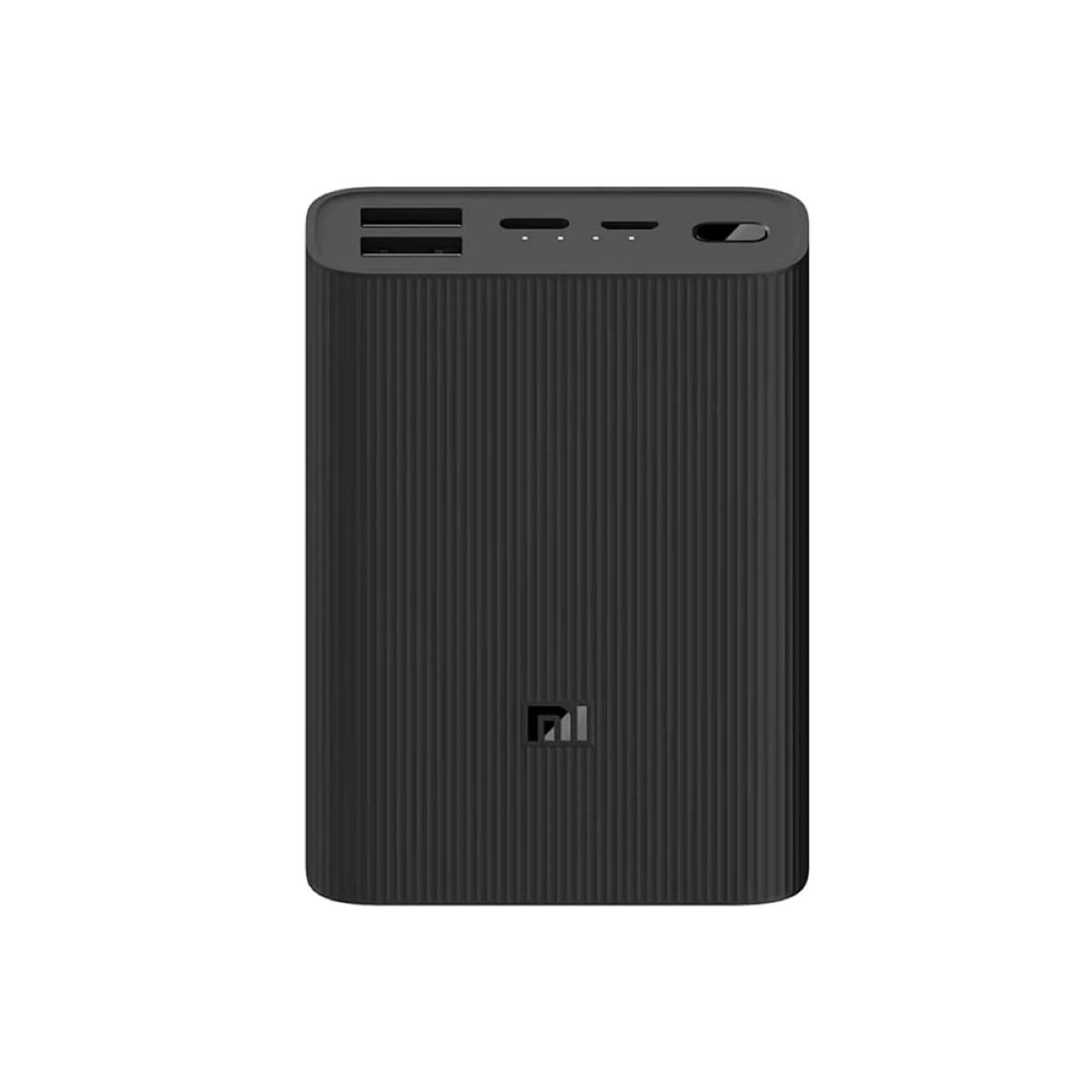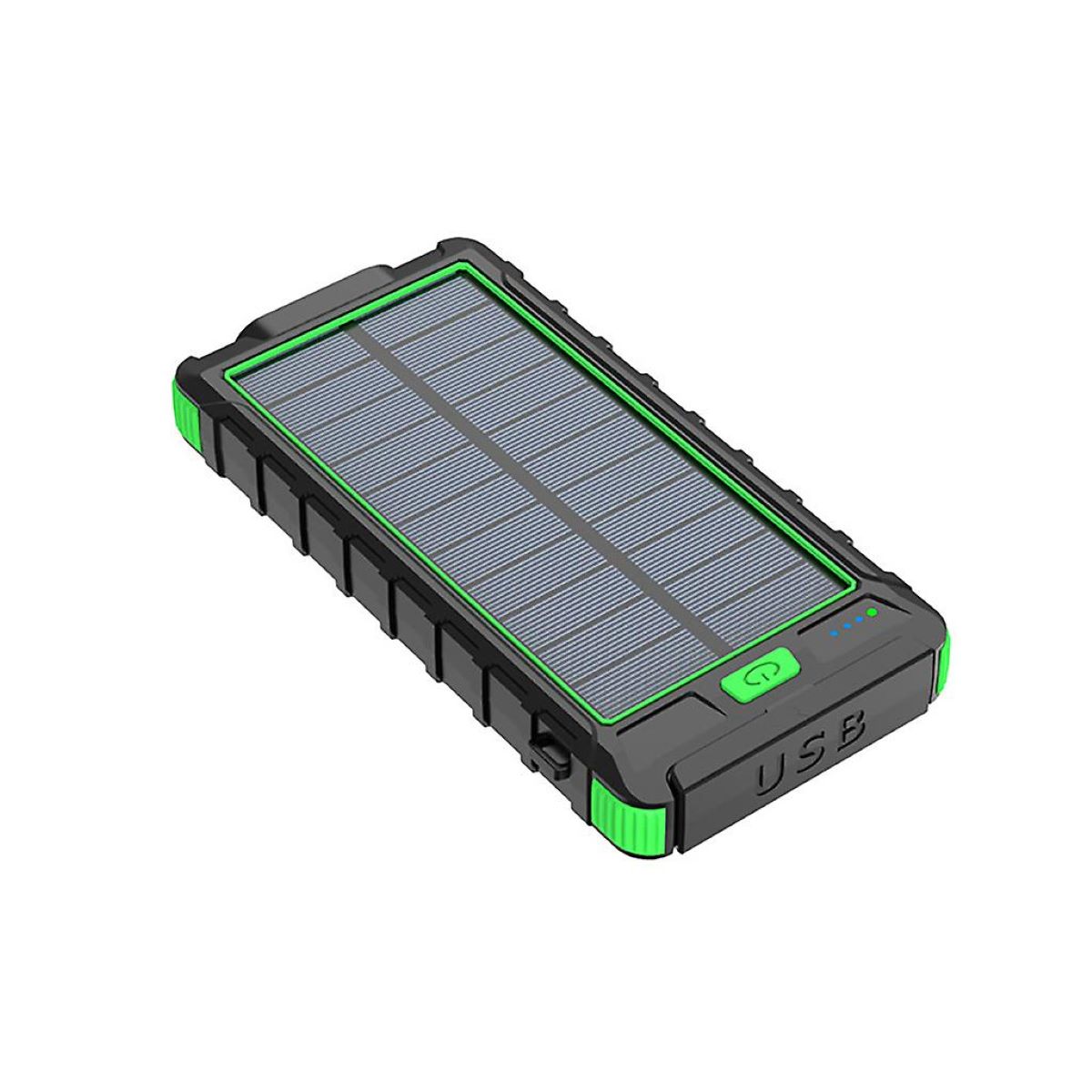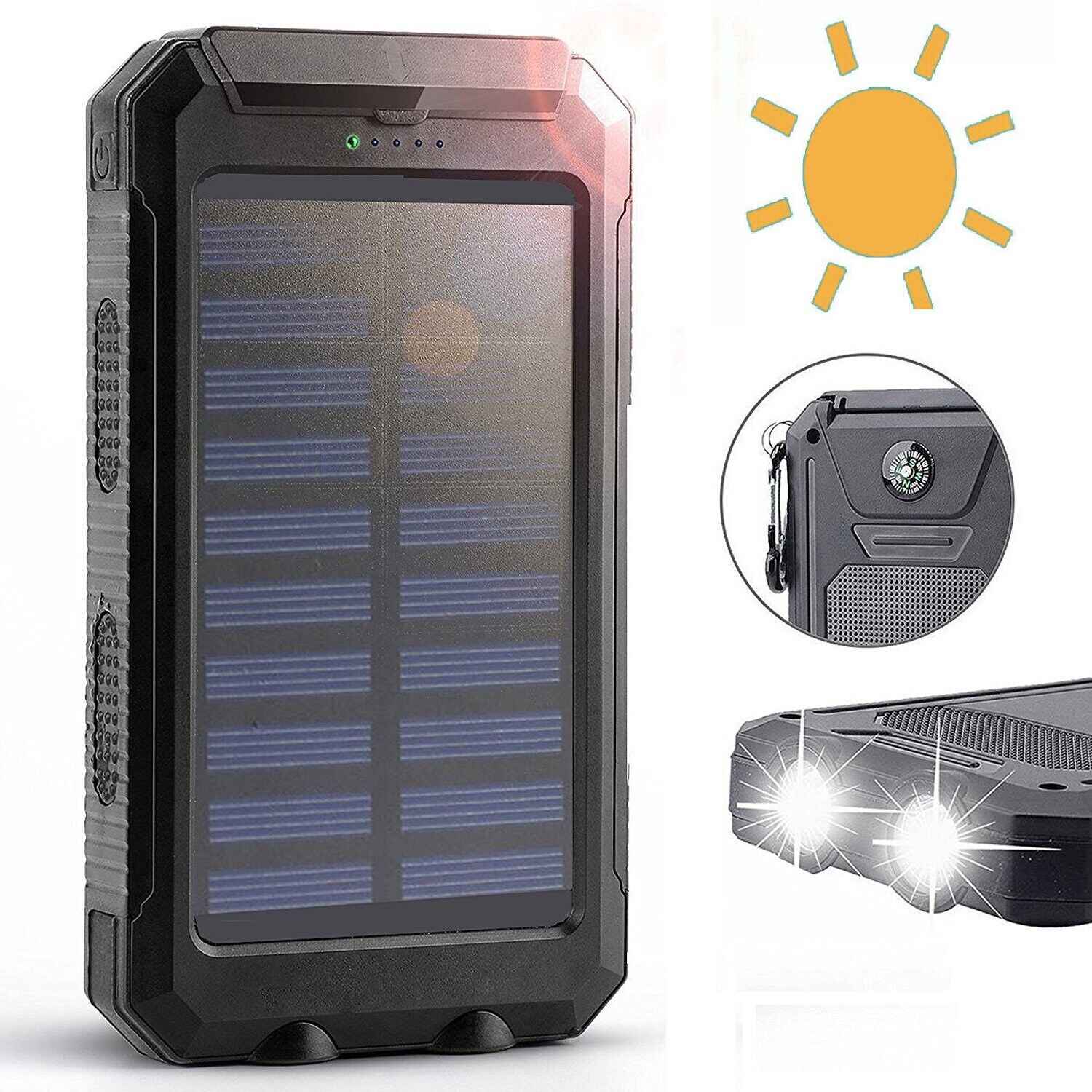Introduction
Welcome to our guide on how many charges a 30,000 mAh power bank can provide! In the fast-paced digital age, where our devices accompany us everywhere we go, having a reliable power source is crucial. Power banks have become an essential tool for keeping our smartphones, tablets, and other gadgets powered up on the go.
But have you ever wondered how many times a 30,000 mAh power bank can charge your devices? Understanding the capacity of a power bank and its implications is essential in making informed decisions when it comes to purchasing one. In this article, we will dive into the intricacies of power bank capacities and explore the factors that affect the number of charges it can provide.
Knowing how many times your power bank can charge your devices can save you from unexpected power outages during critical moments. Whether you’re a traveler, a student, or simply someone who relies heavily on their devices, understanding the capabilities of your power bank will ensure that you never run out of power when it’s needed the most.
So, if you’re ready to explore the world of power bank capacities and discover how many charges a 30,000 mAh power bank can provide, let’s dive in and find out!
Power Bank Basics
Before delving into the details of power bank capacities, let’s understand the basics of how they work. A power bank, also known as a portable charger or external battery pack, is a portable device that stores electrical energy and provides it to your electronic devices when needed.
Power banks come in various shapes and sizes, but they all serve the same purpose – to provide a convenient and portable source of power. They have built-in batteries that can be charged using a wall adapter, a USB port, or even solar panels in some cases. Once charged, the power bank acts as a reservoir of electrical energy that can be used to charge devices like smartphones, tablets, smartwatches, headphones, and more.
One of the key features of a power bank is its capacity, which refers to the amount of electrical energy it can store. Capacity is typically measured in milliampere-hours (mAh) and indicates the total amount of charge the power bank can deliver over time. The higher the capacity, the more charges your power bank can provide.
It’s important to note that power banks are not 100% efficient, meaning that some of the energy is lost during the charging and discharging process. This is due to factors like heat dissipation and voltage conversions. As a result, the actual usable capacity of a power bank will be slightly less than the stated capacity.
In addition to capacity, power banks also have other important specifications to consider, such as input and output voltage, charging speed, and safety features. These factors can impact the overall performance and compatibility of the power bank with different devices.
Now that we have covered the basics of power banks, let’s delve deeper into how the capacity of a power bank is measured and what it means for the number of charges it can provide.
How is the Capacity of a Power Bank Measured?
To accurately determine the capacity of a power bank, manufacturers measure it in milliampere-hours (mAh). The mAh rating indicates the total amount of charge the power bank can deliver over time. For example, a 10,000 mAh power bank can theoretically deliver 10,000 milliampere-hours of charge.
However, it’s important to understand that the mAh rating alone doesn’t provide a complete picture of how many times a power bank can charge your devices. The actual useful capacity of a power bank is affected by various factors, including internal resistance, energy loss during charging and discharging processes, and the efficiency of the electronics inside the power bank.
Most power banks have an efficiency rating of around 70-90%. This means that only a percentage of the total capacity can be effectively utilized to charge your devices. The remaining energy is lost as heat and due to other factors like voltage conversions.
To calculate the actual usable capacity of a power bank, you can multiply its stated mAh rating with the efficiency percentage. For example, if you have a 10,000 mAh power bank with an efficiency of 80%, the actual usable capacity would be 8,000 mAh.
It’s worth noting that the efficiency of a power bank can vary among different models and brands. Higher-quality power banks often have better efficiency, resulting in more usable capacity. Therefore, it’s important to consider the efficiency rating when choosing a power bank.
In addition, it’s common for power banks to have multiple output ports with varying amperage ratings. The amperage rating determines how quickly the power bank can deliver charge to your devices. Higher amperage ratings mean faster charging speeds, but it also means increased power consumption, potentially reducing the overall number of charges the power bank can provide.
Understanding how the capacity of a power bank is measured and the factors affecting its actual usable capacity is crucial for estimating the number of charges it can provide. In the next section, we will explore how to calculate the number of charges a power bank can deliver based on its capacity and the device’s battery size.
Understanding mAh
To fully grasp the concept of power bank capacities, it’s important to understand the meaning of milliampere-hours (mAh). mAh is a unit of electrical charge commonly used to measure the capacity of batteries, including power banks.
Essentially, mAh represents the amount of electric charge that can be delivered by a battery over one hour. The higher the mAh rating, the more charge the battery can hold and deliver. For example, a power bank with a capacity of 10,000 mAh can theoretically deliver 10,000 milliampere-hours of charge.
When it comes to estimating the number of charges a power bank can provide, you need to consider the mAh rating of both the power bank and the device you’re charging. The device you’re charging also has a battery with a specific mAh rating.
To get an idea of the number of charges, you can divide the capacity of the power bank by the capacity of the device’s battery. For instance, if you have a 30,000 mAh power bank, and your smartphone has a battery capacity of 3,000 mAh, you can potentially charge your smartphone approximately 10 times (30,000 mAh / 3,000 mAh = 10).
It’s important to note that this calculation provides an estimate and doesn’t take into account factors like power bank efficiency, voltage conversions, or the condition of the device’s battery. These factors can affect the actual number of charges you get from your power bank.
Keep in mind that the actual usable capacity of a power bank will be slightly less than the stated mAh rating due to factors like energy loss and internal resistance. So, while the math may suggest a certain number of charges, the actual performance may vary.
Additionally, the number of charges can be influenced by the charging habits and usage patterns of your devices. For example, heavy usage of your device while it’s being charged can reduce the overall number of charges you can obtain from the power bank.
Understanding the mAh rating and its implications is crucial in determining the potential number of charges a power bank can provide. In the next section, we will explore the factors that can affect the number of charges a power bank can deliver in practice.
Calculating the Number of Charges
Calculating the number of charges a power bank can provide involves considering multiple factors, including the capacity of the power bank, the capacity of the device’s battery, and the efficiency of both the power bank and the charging process.
To estimate the number of charges, you can follow a simple calculation. Divide the capacity of the power bank (in mAh) by the capacity of the device’s battery (also in mAh). This will give you the approximate number of charges you can get from the power bank.
For example, let’s say you have a 30,000 mAh power bank and your smartphone has a 3,000 mAh battery. By dividing the power bank’s capacity by the device’s battery capacity, you can expect approximately 10 full charges (30,000 mAh / 3,000 mAh = 10 charges).
However, it’s important to note that this calculation provides a rough estimate and doesn’t take into account various factors that can affect the actual number of charges. These factors include the efficiency of the power bank, energy loss during charging and discharging, and the condition of the device’s battery.
As mentioned earlier, power banks are not 100% efficient, and some energy is lost during the charging and discharging process. Therefore, the actual usable capacity of a power bank will be slightly less than the stated capacity. Additionally, the condition of the device’s battery, such as its age and health, can also impact charging efficiency.
Furthermore, charging habits and usage patterns can influence the number of charges you can get from a power bank. For instance, if you use your device while it is being charged, the charging process may take longer, and you may not get a full charge from the power bank.
It’s also important to consider that not all devices have the same battery capacity. Smartphones, tablets, and other electronic devices come with batteries of varying sizes, which will affect the number of charges you can obtain from a power bank.
Ultimately, calculating the exact number of charges a power bank can provide is challenging due to various factors that impact the overall efficiency of the charging process. It’s best to use the calculation as a guideline and consider other factors like power bank efficiency, device usage, and battery condition for a more accurate estimate.
In the next section, we will explore the different factors that can affect the number of charges a power bank can deliver.
Factors Affecting the Number of Charges
Several factors can influence the number of charges a power bank can provide. Understanding these factors is essential in accurately estimating the charging capacity and optimizing the usage of your power bank.
1. Power Bank Efficiency: Power banks are not 100% efficient, meaning that some energy is lost during the charging and discharging process. Factors like heat dissipation, voltage conversions, and internal resistances can result in energy loss. Therefore, a power bank with a higher efficiency rating will provide more usable capacity, resulting in a greater number of charges.
2. Battery Health: The condition of the device’s battery being charged can impact the overall charging efficiency. As batteries age, their capacity diminishes, meaning they can hold less charge. This reduced capacity can affect the overall performance and the number of charges you can get from a power bank.
3. Device Usage During Charging: Using your device while it is being charged can impact the rate at which the device charges. Heavy usage during charging can slow down the charging process and result in a lower charge level compared to when the device is not in use during charging. This can reduce the number of full charges you can obtain from a power bank.
4. Charging Speed and Amperage: The charging speed of your device can also affect the number of charges. Some devices have fast charging capabilities, which allow them to charge at higher amperage rates. While faster charging can be convenient, it also consumes more power. Higher amperage charging can reduce the overall number of charges a power bank can provide.
5. Environmental Conditions: Environmental factors such as temperature can impact the overall efficiency of a power bank and the charging process. Extreme temperatures, both hot and cold, can affect the performance of the power bank and decrease its effective capacity.
It’s important to consider these factors when estimating the number of charges a power bank can provide. Keep in mind that the calculation based on capacity alone provides a rough estimate. Real-world conditions and variables can affect the actual number of charges you will obtain.
By understanding these factors, you can optimize the usage of your power bank and make informed decisions about when and how to charge your devices to maximize the number of charges and ensure you always have power when you need it.
Case Study: 30,000 mAh Power Bank
Let’s take a closer look at a specific example to understand the practical implications of a 30,000 mAh power bank. Keep in mind that this is a hypothetical case study and the actual results may vary based on various factors mentioned earlier.
A 30,000 mAh power bank, with its sizable capacity, is considered a high-capacity option. Using the calculation method discussed earlier, we can estimate the number of charges this power bank can provide for devices with different battery sizes.
For example, if you have a smartphone with a 3,000 mAh battery, you can theoretically achieve around 10 full charges (30,000 mAh / 3,000 mAh = 10 charges). This means you can charge your smartphone from 0% to 100% approximately 10 times before needing to recharge the power bank.
Similarly, if you have a tablet with a larger battery, let’s say 6,000 mAh, you can expect around 5 full charges (30,000 mAh / 6,000 mAh = 5 charges). This means you can fully charge your tablet 5 times before the power bank needs to be replenished.
It’s important to remember that these calculations provide a rough estimate and don’t account for various factors like power bank efficiency, energy loss, and device usage during charging. Additionally, the actual usable capacity of a power bank will be slightly less than the stated mAh rating.
Other factors such as the charging speed of your devices, battery health, and environmental conditions can also affect the number of charges you can obtain from a power bank.
Therefore, it’s crucial to consider these factors and use the estimations as a guideline rather than absolute numbers. Prioritize understanding the capacity of your power bank and the needs of your devices to ensure you have enough power for your daily use or while on the go.
By keeping these factors in mind and having a clear understanding of your power bank’s capabilities, you can make the most of your 30,000 mAh power bank and ensure you have a reliable source of power whenever and wherever you need it.
Conclusion
In conclusion, understanding the number of charges a power bank can provide is essential for ensuring that your devices stay powered up on the go. A 30,000 mAh power bank, with its high capacity, offers a substantial amount of charge to keep your smartphones, tablets, and other gadgets running.
However, it’s important to note that the estimated number of charges provided by a power bank is influenced by several factors. These include power bank efficiency, battery health of the device being charged, device usage during charging, charging speed, and environmental conditions.
Calculating the number of charges is a straightforward process where you divide the power bank’s capacity (in mAh) by the device’s battery capacity (also in mAh). This provides a rough estimate of the number of full charges you can expect.
It’s crucial to keep in mind that the calculation is an approximation and doesn’t take into account various factors that affect the actual number of charges, such as efficiency and energy loss. Each power bank model and device combination may provide slightly different results.
To make the most of your power bank, consider factors like the efficiency rating of the power bank, charging habits and patterns, and the condition of the device’s battery. By optimizing the usage and understanding the capabilities of your power bank, you can extend its charging capacity and ensure you have enough power for your devices.
Remember to choose a power bank with desirable features such as fast charging capabilities, multiple output ports, and high-quality construction for a reliable and efficient charging experience.
With this knowledge, you can confidently utilize your 30,000 mAh power bank to stay connected, productive, and entertained wherever you go. Enjoy the convenience of having a portable power source to keep your devices powered up, no matter how long your adventures may be.







